 W
WAdelaide of Burgundy was a daughter of Hugh IV, Duke of Burgundy by his first wife Yolande of Dreux. Alternatively, she was known as Alice (French) or Aleidis (Dutch). She was Duchess of Brabant as a result of her marriage to Henry III, Duke of Brabant in 1251 and would act as regent of the Duchy following the death of her husband a decade later.
 W
WAdelaide of Metz was a French noblewoman.
 W
WAdele of Valois was a daughter of Ralph IV of Valois and Adele of Bar-sur-Aube.
 W
WAimery IV viscount of Thouars was a companion of William the Conqueror on his Invasion of England in 1066.
 W
WAnne of Armagnac, Dame d'Albret, Countess of Dreux was a French noblewoman and a member of the powerful Gascon Armagnac family which played a prominent role in French politics during the Hundred Years War and were the principal adversaries of the Burgundians throughout the Armagnac-Burgundian Civil War. Anne was the wife of Charles II d'Albret. One of her illustrious descendants was Queen Jeanne III of Navarre, mother of King Henry IV, the first Bourbon king of France.
 W
WAnne of Auvergne also known as Anna d'Auvergne was Sovereign Dauphine of Auvergne and Countess of Forez as well as Dame de Mercoeur from 1400 and 1417. She was also Duchess of Bourbon by marriage to Louis II, Duke of Bourbon.
 W
WJean IV de Beaumont was a Marshal of France.
 W
WNa Castelloza was a noblewoman and trobairitz from Auvergne.
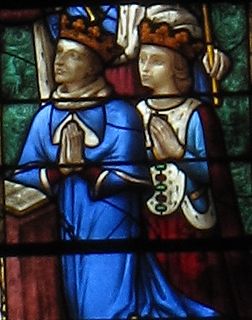 W
WCharlotte of Bourbon was the queen consort of Cyprus and titular queen consort of Armenia and Jerusalem through her marriage to King Janus. She was his second wife and the mother of his six legitimate children, which included King John II and Anne de Lusignan. It was Charlotte's influence which was instrumental in the revival of French culture at the royal court in Nicosia.
 W
WGaucher V de Châtillon, Lord of Châtillon, Count of Porcien, was constable of Champagne in 1284 and then Constable of France (1302–1329) during the reigns of five different kings. He was also tutor to the future Louis X of France and his primary minister.
 W
WGuy I of Clermont-Nesle was a Marshal of France, Seigneur (Lord) of Offemont jure uxoris, and possibly of Ailly, Maulette and Breteuil. He might have been a Seigneur of Nesle also, or used the title "Sire of Nesle" due to his family. Difficulties about the seigneurie of Breteuil are present, and the status of Ailly and Maulette in relation to Breteuil.
 W
WRaoul II/III of Clermont-Nesle was Seigneur (Lord) of Nesle in Picardy (de), Viscount of Châteaudun (de), Grand Chamberlain of France and Constable of France.
 W
WSimon II of Clermont-Nesle was Seigneur (Lord) of Ailly, Maulette and Nesle (de). Note that there is a great confusion of names and titles within this family and with people with the same or similar names, as with many other medieval lords because of contradictory and incomplete documents.
 W
WPhilip of Artois was the son of Robert II of Artois, Count of Artois, and Amicie de Courtenay. He was the Lord of Conches, Nonancourt, and Domfront.
 W
WJean de Corbeil, Seigneur of Grez-sur-Loing, was a Marshal of France.
 W
WJacques d'Arc, originally spelled Darc (1380–1440), was a farmer in the village of Domrémy in Lorraine, and the father of the French heroine and Catholic saint Jeanne d'Arc.
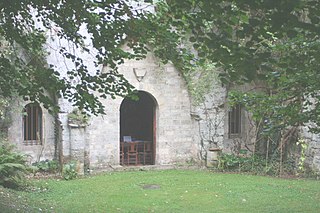 W
WHerluin de Conteville (1001–1066), also sometimes listed as Herlwin of Conteville, was the stepfather of William the Conqueror, and the father of Odo of Bayeux and Robert, Count of Mortain, both of whom became prominent during William's reign. He died in 1066, the year his stepson conquered England.
 W
WBlessed Delphine of Glandèves, T.O.S.F., was born in 1284 in region of Provence, now part of France. She died on 26 November 1358, having lived as a Franciscan tertiary for most of her life.
 W
WElizabeth of Nevers was Duchess of Cleves from 1455 until her death, due to her marriage with John I of Cleves-Mark. She was the matriarch of the house of Cleves-Nevers, and thus the Cleves line of the Counts and dukes of Nevers. Because the territory was part of her inheritance, it fell to her son Engelbert after her death.
 W
WElzéar of Sabran, T.O.S.F., Baron of Ansouis, Count of Ariano, was born in the castle of Saint-Jean-de-Robians, near Cabrières-d'Aigues in Provence, southern France, in 1285. He died in Paris, France, on September 27, 1323. He was a tertiary of the Franciscan Order as well as a ruler, diplomat and military leader. He was recognised as a saint in the Catholic Church.
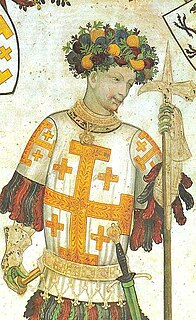 W
WGodfrey of Bouillon was a French nobleman and one of the pre-eminent leaders of the First Crusade. He was the first ruler of the Kingdom of Jerusalem from 1099 to 1100. He apparently avoided using the title of king, choosing instead that of princeps. Older scholarship is more fond of another title, that of "advocatus of the Holy Sepulchre", a secondary title probably used by Godfrey, which is still also preferred by the Catholic Equestrian Order of the Holy Sepulchre of Jerusalem.
 W
WGuy II of Dampierre was constable of Champagne, and Lord of Dampierre, Bourbon and Montluçon. He was the only son of William I of Dampierre, Lord of Dampierre, and Ermengarde of Mouchy. William I of Dampierre was the son of Guy I, Lord of Dampierre and Viscount of Troyes, and Helvide de Baudémont.
 W
WIsabella of Foix also known as Isabella of Foix-Castelbon was sovereign Countess of Foix and Viscountess of Béarn from 1399 until 1428. She was Countess of Foix in her own right, but shared power with her husband and later with her son. She succeeded as countess along with her husband upon the death of her childless brother Matthew.
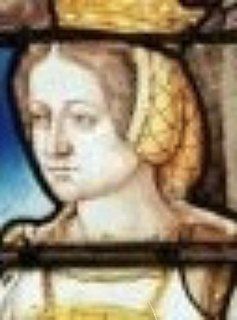 W
WIsabelle de Beauvau or Isabeau de Beauvau was a French noblewoman, of the Beauvau family, lady of Champigny and de la Roche-sur-Yon, countess of Vendôme by her marriage. She is the trisaïeule of King Henry IV of France and Catherine de' Medici, her great-granddaughter.
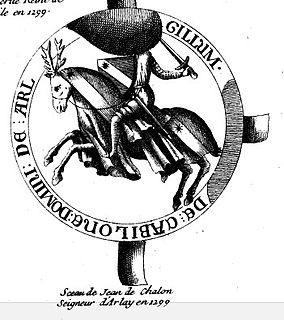 W
WJean I of Chalon-Arlay (1258–1315) was a French nobleman. He was the son of Jean, Count of Chalon and Laure de Commercy, a couple who had thirty castles built on the Jurassian part of the county of Burgundy around their new seigneurie of Salins, including the Château d'Arlay. He was Seigneur of Arlay (1266–1315) and Viscount of Besançon (1295–1315).
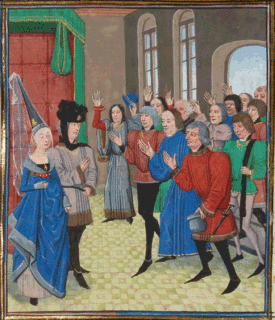 W
WJoanna of Flanders was Duchess of Brittany by her marriage to John of Montfort. Much of her life was taken up in defence of the rights of her husband and, later, son to the dukedom, which was challenged by the House of Blois during the War of the Breton Succession. Known for her fiery personality, Joanna led the Montfortist cause after her husband had been captured, and began the fight-back, showing considerable skill as a military leader.
 W
WGilbert Motier de La Fayette Seigneur of La Fayette, Pontgibaud, Ayes, Nébouzac, Saint-Romain and Montel-de-Gelat was a Marshal of France and an ancestor of Gilbert du Motier, Marquis de Lafayette.
 W
WGeoffrey IV de la Tour Landry was a nobleman of Anjou who fought in the Hundred Years War.
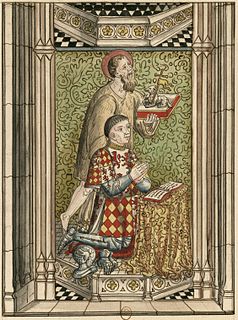 W
WLouis I de Beauvau, lord of Beauvau and Sermaise in Anjou, was the first son of Pierre, Baron of Beauvau, and Jeanne de Craon. Ambassador to Henry VI of England, retainer of the House of Anjou, and close friend of René I of Anjou, he was made a knight of the Ordre du Croissant.
 W
WMargaret of Béarn was a noblewoman who ruled lands near the Pyrenees mountains and in the southwestern part of present-day France. She inherited the lands, assets and title, Viscountess of Béarn, on the death of her father in 1290. Later, she inherited the assets and title of Countess of Bigorre, from her sister when she died in 1310.
 W
WMargaret of Brittany was a duchess consort of Brittany. She was the elder of the two daughters of Francis I, Duke of Brittany, by his second wife, Isabella of Scotland.
 W
WMargaret of France (1254–1271) was a daughter of Louis IX of France and his wife Margaret of Provence. She was a member of the House of Capet and was Duchess of Brabant by her marriage to John I, Duke of Brabant.
 W
WMargaret of Nevers, also known as Margaret of Burgundy, was Dauphine of France and Duchess of Guyenne as the daughter-in-law of King Charles VI of France. A pawn in the dynastic struggles between her family and in-laws during the Hundred Years' War, Margaret was regarded as the future Queen of France at two separate times, as a result of her two marriages: first to the Dauphin and second to the Duke of Brittany.
 W
WMartha of Armagnac was the youngest child of John I of Armagnac and his second wife Beatrice of Clermont. She was the first wife of John I of Aragon but never became Queen consort of Aragon because she was outlived by her father-in-law Peter IV of Aragon.
 W
WMaud of Normandy was the daughter of Richard the Fearless and Gunnor. Her siblings were Richard II "the Good", Duke of Normandy, Robert, Archbishop of Rouen, Count of Evreux, died 1037, Mauger, Count of Corbeil, Robert Danus, Emma of Normandy and Hawise of Normandy.
 W
WFoulques or Foucaud du Merle was a Marshal of France, Seigneur of Gacé and Bellou-en-Houlme, and Baron of Le Merlerault, Briouze and Messei.
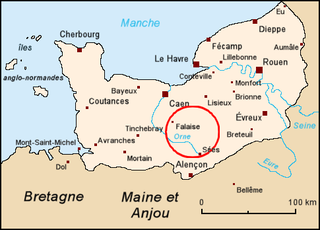 W
WRoger de Montgomery, seigneur of Montgomery and vicomte of the Hiémois.
 W
WJean IV de Noyelles was a French nobleman and knight.
 W
WHugues de Payens or Payns was the co-founder and first Grand Master of the Knights Templar. In association with Bernard of Clairvaux, he created the Latin Rule, the code of behavior for the Order.
 W
WPhilippe II of Alençon was a French cardinal who was a member of the Valois Dynasty. He was the second son of Count Charles II of Alençon, who was killed in the Battle of Crécy, and of Maria de La Cerda y de Lara. He was the younger brother of Count Charles III of Alençon.
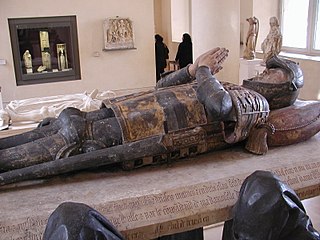 W
WPhilippe Pot (1428–1493) was a Burgundian nobleman, military leader, and diplomat. He was the seigneur of La Roche and Thorey-sur-Ouche, a Knight of the Golden Fleece, and the Grand Seneschal of Burgundy.
 W
WJean II de Rieux Lord of Rieux, Rochefort and Ancenis, was a Marshal of France in the service of King Charles VI. He was the great-grandfather of Jean IV de Rieux.
 W
WPhilippe de Toucy was a French Crusader nobleman.
 W
WYolande of Aragon was Duchess of Anjou and Countess of Provence by marriage, who acted regent of Provence during the minority of her son. She was a daughter of John I of Aragon and his wife Yolande of Bar. Yolande played a crucial role in the struggles between France and England, influencing events such as the financing of Joan of Arc's army in 1429 that helped tip the balance in favour of the French. She was also known as Yolanda de Aragón and Violant d'Aragó. Tradition holds that she commissioned the famous Rohan Hours.